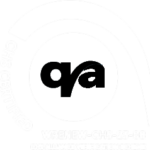CRWRC Newsroom | 50th Stories | April 30, 2012
Part of the mission of the Christian Reformed Church is to “transform lives and communities worldwide,” but what does it really mean to transform a community?
The Christian Reformed World Relief Committee (CRWRC) has been exploring this important question as part of its community development ministry for the past 50 years. There have been trials and mistakes, as well as awe-inspiring successes along the way. The community of Agua Caliente, along the North coast of Honduras is a prime example.
CRWRC began working in Honduras following Hurricane Fifi in 1974. Along with several large, Christian organizations from North America and Europe, CRWRC started a Honduran agency called CEDEN (the Comite Evangelico de Deserrollo y Emergencia Nacional) to work in several regions of Honduras and carry out relief work through local evangelical churches.
“In 1978, the regional director of CEDEN asked me to visit a very poor community along the north coast of Honduras,” recalls Darryl Mortensen, a CRWRC consultant to CEDEN from 1977-1982. “CEDEN had been working there for about three years, mainly in a child feeding program. Francisco Castro, the regional director, knew that give-away projects were not the answer to the problems in communities like this. In other communities, CEDEN had programs in health, agriculture, human relations, church development, adult literacy, and construction. The different technical areas were working rather well, but not always in the same communities. Francisco was determined that we would all work together.”
While Mortensen, an agricultural promoter with CRWRC, was primarily interested in working with farmers to increase their incomes, he agreed to participate. The community that Francisco and Darryl travelled to that day was Agua Caliente. It was a very difficult place to work. Most of the surrounding farmland was swampy or located on steep mountainsides. Families lived in mud huts. There were no latrines and no water system other than going to get buckets of water from the river.
“The community meetings went well. CEDEN then decided that the entire staff of 12 promoters and office support staff should meet together to discuss what should be done. We didn’t involve the community very much at this point. In 1978, community people were not thought to have much valuable input into the community development process, this idea would change in a very short time,” said Mortensen.
During the staff meeting, CEDEN decided to address both the need for improved agriculture and the need for potable water. Since it was not planting season, they started with the water project. Through several additional meetings with community members, CEDEN agreed that it would provide a surveyor, the design for the project, a $500-$900 loan for PVC pipe, picks, shovels, cement and other materials.
The community would provide the sand, rock, and manpower for digging the two miles of trenches. They would also provide the labor for installation, two leaders to be trained in how to maintain and repair the water system, and the formation of a community water committee. Each household in the community also agreed to build a latrine, use it properly, and contribute 50 cents each month to pay off the water system within two years.
“I was there in the mountains when the project started,” said Mortensen. “The village had to build a small dam for water collection, install a special pipe from the dam to the side of the ravine, and then dig over a mile of trenches that were one foot wide and 18 inches deep. Then they needed to dig trenches in the community and install a faucet in at each house. I thought that this would take a week or more to complete. I left for other work that needed to be done, and then returned to the dam site later that afternoon. The dam was complete, the trenches were dug, the men were gluing the pipe together and they were almost to the village! The villagers said they would finish the project by the next day. They were correct. I was becoming a believer in what these people could accomplish for themselves.”
This experience changed the way that CEDEN worked in communities. They began to involve community members in the entire development process, and believed in their ability to do whatever they set their minds to. This lesson reverberated to other places where CRWRC was working as well – encouraging CRWRC staff and its partners not to make decisions for their target communities, but to instead let the community members take the initiative and lead the way in their own development.
The lessons to be learned in Agua Caliente were not over. By 1979, some of the swampland in Agua Caliente had been drained by a Dutch charitable organization and the land was now being prepared for the first major production of rice. Up until this point, the villagers in Agua Caliente had been earning between $400 and $500 each year by growing an average of 2,500 pounds or rice on each manzana (about 1.4 acres). In 1980, CEDEN provided each farmer with a $50 loan to purchase seed, fertilizer, and other supplies. They estimated that this year’s crop would be in the range of 5,000-6,000 pounds per manzana, doubling family incomes to $1,000-$1,200 that year. The farmers would then pay back their loan at an interest rate of 0.075 per cent per month.
“We were new to the community development arena and were not prepared for what was about to happen,” said Mortensen. “Others in the region had seen the rice growing and knew that money would be available soon. Men known as ‘coyotes’ set up booths of gambling, liquor, games, cheap merchandise and prostitution at harvest time. Within a week or two after the harvest, nearly all of the $125,000 that the community had earned was gone. “
When CEDEN came to collect the $50 loan from each household, almost none could repay it. What had appeared to be such a success was in reality a failure.
“CEDEN decided it should carry most of the responsibility for this failure because it had not prepared the community for this amount of income from just one harvest,” said Mortensen. “They decided that their human relations/church development promoters should be more involved to help farmers avoid this type of pitfall”
The farmers agreed to pay back their loans after the following harvest. Over the next several months, CEDEN worked diligently to prepare the community. In addition to agriculture programs, they worked through the churches and gave workshops about the “coyotes” and their methods of exploiting people for money. After the next harvest, yields were up even more. The coyotes were present, but only 10% of the residents fell into their hands.“That year, about fifteen or twenty new homes were built and nearly all of the loans were repaid,” said Mortensen.
By working together and addressing values and lifestyle changes in addition to technical programs such as agricultural improvements, the community was changing in a real and lasting way. Francisco Castro’s idea of working together in a wholistic way was taking root and having success.
The community, CEDEN, and CRWRC did meet other challenges over the years, but the results were never as devastating as that first year of increased income.
Mortensen left Honduras in 1982 and CEDEN discontinued its work in Agua Caliente shortly after. The progress in the village, however, didn’t end. When Mortensen returned to Agua Caliente on a visit in 1995 he saw several signs that the community had continued to improve. There were no longer any mud huts. Instead, all 125 families were now living in cement block homes with tin roofs. There were two potable water systems serving the community and every household had a faucet and contributed towards the systems’ upkeep. Each household also had the special latrines that CEDEN had designed for use in the swampy Agua Caliente area.
“I asked about Doña Chila, the poorest women in the village when I had worked in Agua Caliente,” said Mortensen. “I was told that she was still living in the community on the same plot of land. I arrived at Doña Chila’s house and there she was, standing in the doorway with a baby in her arms. The last time I saw her, 13 years earlier, she had been holding her own baby in front of her stick and scrap wood house. Now she was standing in front of a nice cement block house with a cement floor holding one of her grandchildren.”
During the visit, several farmers also approached Mortensen to tell him they were still using the fertilizing bean that he had helped to introduce and were still putting into practice many of the technical concepts that they had learned during CEDEN’s tenure there.
This is what community transformation is all about – helping community members to recognize their own value as God’s image bearers and their own abilities to work for change, and then equipping them to carry out those changes in a way that can stand the test of time. Praise God for what He has done in Agua Caliente and around the world!
~by Kristen deRoo Vanderberg, CRWRC Communications



